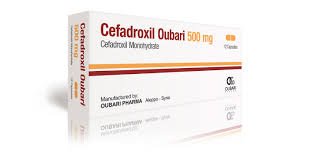
Introduction:
Cefadroxil, an antibiotic belonging to the cephalosporin class, has been a cornerstone in treating various bacterial infections for decades. Its efficacy, safety profile, and versatility have made it a trusted choice among healthcare providers. In this comprehensive guide, we delve into the uses, benefits, and safety considerations surrounding cefadroxil.
History and Development:
Cefadroxil was first synthesized in the 1970s, emerging as a derivative of cephalosporin. Its development marked a significant advancement in antibiotic therapy, particularly against gram-positive bacteria. Over the years, it has undergone refinements, leading to enhanced potency and broader spectrum of activity.
Mechanism of Action:
Similar to other cephalosporins, cefadroxil exerts its bactericidal effects by inhibiting bacterial cell wall synthesis. It achieves this by binding to penicillin-binding proteins (PBPs), thereby disrupting the formation of peptidoglycan, an essential component of bacterial cell walls. This mechanism ultimately leads to bacterial cell lysis and death.
Indications and Uses:
Cefadroxil is primarily indicated for the treatment of various bacterial infections, including skin and soft tissue infections, urinary tract infections, respiratory tract infections, and certain sexually transmitted infections. Its broad spectrum of activity encompasses both gram-positive and some gram-negative bacteria, rendering it effective against a wide range of pathogens.
Skin and Soft Tissue Infections:
Cefadroxil is often prescribed for uncomplicated skin and soft tissue infections caused by susceptible organisms, such as Staphylococcus aureus and Streptococcus pyogenes. These infections may include cellulitis, impetigo, and wound infections, where cefadroxil demonstrates favorable outcomes.
Urinary Tract Infections:
In urinary tract infections (UTIs), cefadroxil proves efficacious against common pathogens like Escherichia coli, Proteus mirabilis, and Klebsiella pneumoniae. Its ability to achieve high concentrations in the urine makes it a valuable option for uncomplicated UTIs, particularly in outpatient settings.
Respiratory Tract Infections:
Cefadroxil is utilized in the management of respiratory tract infections, including pharyngitis, tonsillitis, and otitis media. By targeting pathogens such as Streptococcus pneumoniae and Haemophilus influenzae, it helps alleviate symptoms and prevent complications associated with these infections.
Sexually Transmitted Infections:
Certain sexually transmitted infections, such as uncomplicated gonorrhea caused by Neisseria gonorrhoeae, can be effectively treated with cefadroxil. However, its use in this context may be limited due to emerging antimicrobial resistance patterns.
Dosage and Administration:
Cefadroxil is available in various formulations, including capsules, tablets, and oral suspension. The recommended dosage and duration of therapy depend on the type and severity of the infection, as well as the patient’s age and renal function. It is typically administered orally and can be taken with or without food, although absorption may be slightly delayed when taken with meals.
Safety and Side Effects:
Overall, cefadroxil is well-tolerated by most patients, with side effects being generally mild and transient. Common adverse reactions include gastrointestinal disturbances such as nausea, vomiting, and diarrhea. Allergic reactions, although rare, may manifest as rash, itching, or more severe hypersensitivity reactions like anaphylaxis. Individuals with a history of cephalosporin allergy should exercise caution when using cefadroxil.
Renal Impairment:
Cefadroxil is predominantly excreted unchanged in the urine, necessitating dose adjustments in patients with renal impairment to prevent accumulation and potential toxicity. Monitoring of renal function is advisable, particularly in prolonged courses of therapy or in patients with pre-existing renal conditions.
Drug Interactions:
As with any medication, cefadroxil has the potential for drug interactions, particularly with agents that affect renal function or interfere with its metabolism. Concurrent use of nephrotoxic drugs or potent diuretics may increase the risk of renal toxicity. Additionally, probenecid may prolong the elimination half-life of cefadroxil by inhibiting renal tubular secretion.
Conclusion:
Cefadroxil remains a valuable antibiotic in the armamentarium against bacterial infections, offering efficacy, safety, and convenience in its oral formulation. With its broad spectrum of activity and established track record, it continues to play a vital role in clinical practice. However, prudent use, including consideration of bacterial susceptibility patterns and patient factors, is essential to optimize outcomes and minimize the risk of adverse effects.
